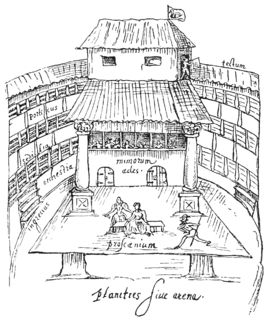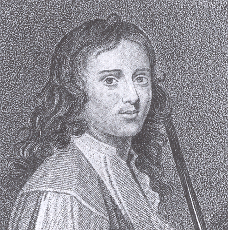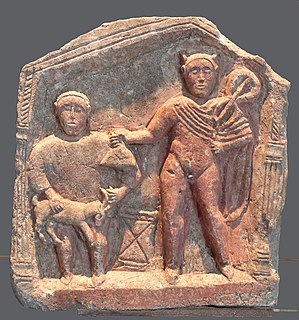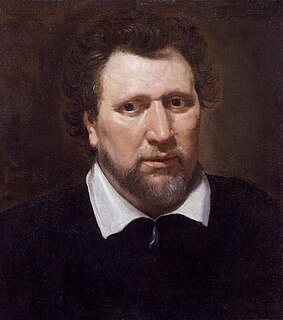
English Renaissance theatre—also known as Renaissance English theatre and Elizabethan theatre—refers to the theatre of England between 1562 and 1642.

Masterpiece, magnum opus or chef-d’œuvre in modern use is a creation that has been given much critical praise, especially one that is considered the greatest work of a person's career or to a work of outstanding creativity, skill, profundity, or workmanship. Historically, a "masterpiece" was a work of a very high standard produced to obtain membership of a guild or academy in various areas of the visual arts and crafts.
The Lord Chamberlain's Men was a company of actors, or a "playing company" as it would have been known, for which Shakespeare wrote for most of his career. Richard Burbage played most of the lead roles, including Hamlet, Othello, King Lear, and Macbeth while Shakespeare himself performed some secondary roles. Formed at the end of a period of flux in the theatrical world of London, it had become, by 1603, one of the two leading companies of the city and was subsequently patronized by James I.

The Red Bull was an inn-yard conversion erected in Clerkenwell, London operating in the 17th century. For more than four decades, it entertained audiences drawn primarily from the City and its suburbs, developing a reputation over the years for rowdiness. After Parliament closed the theatres in 1642, it continued to host illegal performances intermittently, and when the theatres reopened after the Restoration, it became a legitimate venue again. There is a myth that it burned down in the Great Fire of London but the direct reason for its end is unclear.

Michael Mohun was a leading English actor both before and after the 1642—60 closing of the theatres.

The Salisbury Court Theatre was a theatre in 17th-century London. It was in the neighbourhood of Salisbury Court, which was formerly the London residence of the Bishops of Salisbury. Salisbury Court was acquired by Richard Sackville in 1564 during the last seven years of his life when he was Chancellor of the Exchequer under Queen Elizabeth; when Thomas Sackville was created Earl of Dorset in 1604, the building was renamed Dorset House.
Beeston's Boys was the popular and colloquial name of The King and Queen's Young Company, a troupe of boy actors of the Caroline period, active mainly in the years 1637–1642.
Stephen Hammerton was a boy player or child actor in English Renaissance theatre, one of the young performers who specialized in female roles in the period before women appeared on the stage. His case illuminates the conditions of boy actors in this era.
John Rhodes was a theatrical figure of the early and middle seventeenth century. He rose to a brief prominence in 1660 when the London theatres re-opened at the start of the English Restoration era.
Michael Bowyer (1599–1645) was an actor in English Renaissance theatre in the Jacobean and Caroline eras. He spent most of his maturity with Queen Henrietta's Men, but finished his career with the King's Men. With the former company, he was one of "those of principal note," according to James Wright's Historia Histrionica (1699), one of the troupe's "eminent actors."
Richard Gunnell was an actor, playwright, and theatre manager in Jacobean and Caroline era London. He is best remembered for his role in the founding of the Salisbury Court Theatre.
Robert Shatterell (1616–1684) was an English actor of the seventeenth century. He was one of the limited group of actors who began their careers in the final period of English Renaissance theatre, and resumed stage work in the Restoration, after the long theatre closure of the English Civil War and the Interregnum, 1642–1660. [See: Richard Baxter; Nicholas Burt; Walter Clun; Charles Hart; Michael Mohun; William Wintershall.]
William Wintershall, also Wintersall or Wintersell, was a noted seventeenth-century English actor. His career spanned the difficult years of mid-century, when English theatres were closed from 1642 to 1660, during the English Civil War and the Interregnum.
Ellis Worth, or Woorth, was a noted English actor in the Jacobean and Caroline eras. He was a leading member of two important companies, Queen Anne's Men and Prince Charles's Men.
Robert Browne was an English actor and theatre manager and investor of the later sixteenth and early seventeenth centuries. He was also part of a long-standing confusion in the scholarship of English Renaissance theatre.









